Smart Ways to Cast Your iPhone to TV Easily
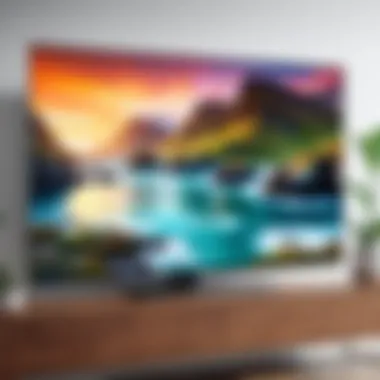

Intro
The ability to cast content from your iPhone to a television has changed the way users interact with media. It allows a seamless transition from small screens to larger displays. This connectivity offers an enriched viewing experience, enabling better sharing of photos, videos, and applications with family and friends. In this guide, we will explore the various methods you can utilize to achieve this casting functionality.
Understanding how to effectively cast from your iPhone involves recognizing the available technologies and their specifications. Whether you are using built-in features such as AirPlay, compatible applications, or dedicated hardware, knowing your options will enhance your overall experience.
Casting is particularly valuable in today’s digital age. With most people relying on their phones for content consumption, the process of projecting that content onto a bigger screen is both practical and appealing. Users across the globe are becoming more familiar with these technologies, and by comprehending their intricacies, one can navigate the casting landscape with ease.
This article serves as a comprehensive resource for anyone looking to cast their iPhone onto their television. We will go over the essential prerequisites, detailed instructions, and troubleshooting strategies to ensure a smooth casting experience.
It is our aim to provide clear insight into screen mirroring technologies and empower you to utilize your devices effectively.
Understanding Screen Casting
In the contemporary digital landscape, the ability to cast content from a smartphone to a television has emerged as a critical function that enhances user experience. Understanding screen casting is fundamentally about recognizing its utility, methods, and implications for both casual viewers and avid tech consumers. The rise of streaming services and the need for larger displays for enhanced viewing have fortified the relevance of casting technologies. Users today are not merely consuming content; they seek efficient and effective ways to bridge their personal devices with larger screens. This understanding lays the groundwork for exploring various methods to cast an iPhone onto a television.
Definition and Importance
Screen casting refers to the process of wirelessly transferring video and audio content from one device, like an iPhone, to another, such as a TV. This capability allows users to enjoy multimedia on a screen that provides a broader viewing experience. The importance of screen casting lies in its versatility. Users can display everything from videos and presentations to games and apps, thus fostering an interactive and immersive experience.
Moreover, the ability to cast enhances social interactions, allowing for shared viewing experiences among friends and family. Users can effortlessly share their photos, videos, and online content during gatherings. Understanding this capability is essential for anyone looking to leverage technology for more engaging multimedia interactions.
How Casting Differs from Other Display Techniques
Screen casting is often confused with other display techniques such as screen mirroring and HDMI connections. However, screen casting possesses distinct characteristics.
- Screen Mirroring: This technique displays the entire screen of your device on the TV, replicating everything that appears on your iPhone. It is useful for presentations or gaming but can be limited in functionality.
- HDMI Connections: This is a wired connection that directly links the iPhone to the television, often requiring adapters. While reliable, it eliminates mobility, contrasting the freedom of wireless casting.
Casting, in essence, is a more targeted approach. It allows you to share specific content rather than mirroring the full display. Thus, it fosters the flexibility to enjoy entertainment seamlessly, without the constraints posed by other methods.
Prerequisites for Casting
Understanding the prerequisites for casting is essential for an effective and seamless experience when projecting your iPhone's screen onto a television. Without addressing these fundamental elements, users may encounter numerous challenges that could lead to frustration. By ensuring that every prerequisite is met, users can unlock the potential of screen casting, facilitating smooth interactions and an enhanced viewing experience.
Device Compatibility
Casting from an iPhone to a TV is only possible if both devices support the necessary technologies. Apple’s AirPlay is the primary method for this process. Not all TVs are AirPlay-compatible. For example, models from brands like Samsung, LG, and Sony released after 2019 typically include this feature. Older devices may require additional hardware, such as an Apple TV. Users should check their TV specifications or the manufacturer’s website to confirm its compatibility with AirPlay.
In addition to TV compatibility, some casting apps may require specific iOS versions. Therefore, it is advisable to keep your iPhone updated with the latest iOS version for optimal performance and features.
Network Requirements
A stable and robust internet connection is crucial for successful casting. Your iPhone and the TV must be connected to the same Wi-Fi network. If they are on different networks, casting will not function.
Network speed also plays a significant role. A high-speed internet connection is preferable for seamless streaming, particularly when casting high-resolution content. Lagging or buffering can disrupt the viewing experience. In many cases, a speed of at least 25 Mbps is considered adequate for HD streaming.
Remember that wireless interference can affect performance. Factors like distance from the router, walls, and other electronic devices can impact the Wi-Fi signal. Therefore, ensuring devices are within close proximity to the router can enhance the connectivity and overall casting experience.
Make sure to check both your devices and your network to ensure smooth casting.
Using AirPlay
Utilizing AirPlay for casting your iPhone screen to a television is a significant aspect of this guide. AirPlay, developed by Apple, provides users with a seamless way to share videos, music, and other content wirelessly. The simplicity and efficiency of AirPlay can enhance the viewing experience greatly, particularly for those already within the Apple ecosystem.

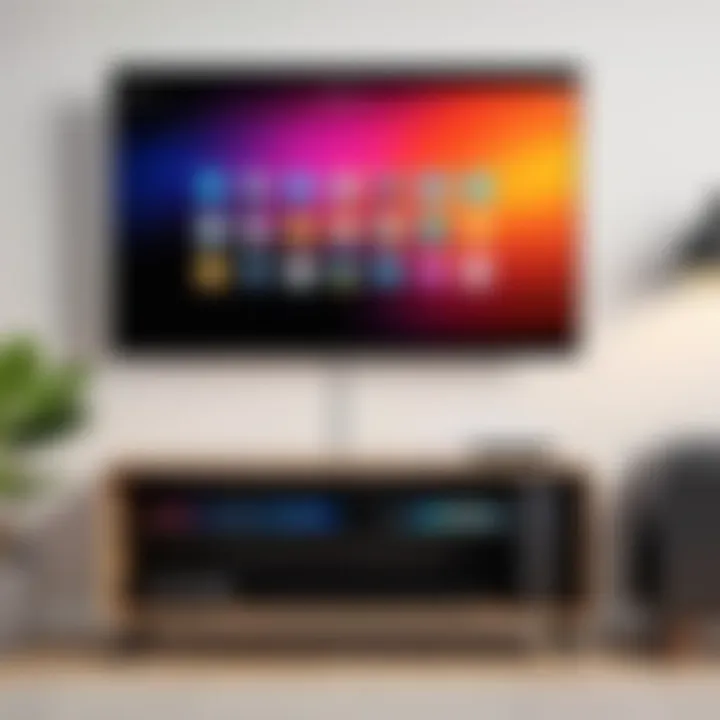
A primary benefit of using AirPlay is its compatibility with numerous devices. Apple TVs, many smart TVs, and speakers can all connect via AirPlay. This flexibility allows users to enjoy a variety of media on bigger screens or through quality sound systems without the hassle of cords or complicated setups. Moreover, AirPlay makes it easier to share photos and videos from your device during gatherings or presentations.
Overview of AirPlay
AirPlay technology enables wireless streaming across devices. It allows users to stream audio, video, and photos from their iPhones to compatible devices like Apple TVs and AirPlay-enabled smart TVs. The connection relies on both devices being on the same Wi-Fi network, ensuring a simple and smooth transfer of media. This technology simplifies sharing content with others, enhancing social interactions via media consumption.
How to Enable AirPlay on Your iPhone
Enabling AirPlay on your iPhone is a straightforward process. Here are the steps:
- Ensure Compatibility: Make sure your iPhone and target device are compatible with AirPlay.
- Connect to Wi-Fi: Both devices should be connected to the same Wi-Fi network.
- Open Control Center: On an iPhone X or later, swipe down from the upper right corner of the screen. For earlier models, swipe up from the bottom edge.
- Tap on Screen Mirroring: You will find the "Screen Mirroring" option. Tap on it to see available devices.
- Select Your Device: Choose the AirPlay-compatible device you want to connect to.
Once this is done, your iPhone will be able to cast content onto the selected display.
Casting to AirPlay-Compatible Devices
Casting content to AirPlay-compatible devices is a breeze once you have established the connection. Here’s how to do it:
- Streaming Videos: Open a video app such as YouTube or Netflix. Start playing the desired video and tap the AirPlay icon, usually represented as a triangle on a rectangle. Select your preferred device.
- Playing Music: Open the music app, play a song, then tap the AirPlay icon to select your speaker or TV.
- Displaying Photos: In the Photos app, select the album or image you want to share. Tap the Share button and then choose the AirPlay option to present it on your TV.
Using Third-Party Applications
Utilizing third-party applications for screen mirroring plays a significant role in enhancing the casting experience from your iPhone to a TV. These apps provide versatility and often come with unique features that Apple's built-in options may not offer. While AirPlay is a powerful tool, it may not be compatible with all devices. This is where third-party solutions bridge the gap, making it possible for users to cast their screens across a wider range of televisions and platforms. The importance of these applications cannot be overstated, especially for users looking for a specific functionality or enhanced performance.
With third-party apps, users can enjoy seamless streaming of various forms of content, including movies, photos, and even games. Some notable advantages include additional customization options, potential support for different file formats, and broader device compatibility. However, it is essential to consider factors like security, ease of use, and the app’s reputation before downloading. Price is also a factor; while some applications are free, others may require a purchase or subscription, which can affect the decision-making process.
Popular Apps for Screen Mirroring
When searching for effective third-party applications to mirror your iPhone to a television, a few options stand out due to their capabilities and user feedback. Here are some popular choices:
- Reflector 4: This app is known for its high-quality mirroring and ability to connect multiple devices at once. It allows for screen casting without cables and is compatible with various operating systems.
- AirServer: Offering extensive compatibility, AirServer allows iPhone users to cast to different platforms. It supports multiple devices, making it a robust option for families or group settings.
- LetsView: This app is free and provides a user-friendly experience. It offers screen mirroring, file transfer capabilities, and various tools for annotation.
- ApowerMirror: Known for its versatility, ApowerMirror supports both screen mirroring and screen recording. It caters to different content formats and provides additional features.
- Mirroring 360: This app allows users to cast to other devices besides just TVs and is compatible with various platforms, making it appealing for diverse media streaming needs.
Users should evaluate these apps based on their specific needs and technological requirements. Reading reviews or checking community discussions on platforms such as reddit.com can provide valuable insights into user experiences.
Installation Procedures
Installation of these third-party screen mirroring apps is generally straightforward, though each app may have its own specific steps. Here’s a general outline for installing these applications:
- Download the App: Go to the App Store on your iPhone and search for the desired app by name. Tap "Get" or "Download" to initiate the installation.
- Set Up the Application: Open the app post-download. Follow any on-screen prompts for setup, which may include allowing permissions for notifications or access to devices on the network.
- Connect to Wi-Fi: Ensure your iPhone and television are on the same Wi-Fi network. This is crucial for the mirroring process to work efficiently.
- Start the Mirroring Process: Within the app, find the option to begin mirroring. You may have to select your television or the device you want to cast to.
- Adjust Settings as Needed: Depending on the app, you might have options to adjust quality settings or customize the connection type. Take a moment to familiarize yourself with any additional features.
Remember that performance can be impacted by network strength and device compatibility, so consider optimal conditions for best results.
By following these detailed installation steps, users can rapidly get their preferred applications set up and start enjoying content on a much larger screen. Such applications enhance the versatility of iPhone casting, providing additional functionalities and broader compatibility compared to default options.
Wired Connections
Using wired connections to cast your iPhone onto a television often provides a more stable and high-quality experience compared to wireless methods. This method eliminates many common issues, such as latency and signal interference, which can lead to frustrating viewing experiences. Wired connections ensure a direct link between devices, making them an effective solution for streaming high-definition content.
HDMI Cables and Adapters
HDMI (High-Definition Multimedia Interface) cables are essential for transferring both video and audio signals from your iPhone to your TV. The quality of the output is often superior to that of wireless casting due to less signal degradation. To connect an iPhone, you will typically need an HDMI adapter.
- Apple Lightning Digital AV Adapter: This adapter is specifically designed for iPhones and allows you to connect your device directly to an HDMI cable. The adapter facilitates a rapid connection to your television, supporting up to 1080p resolution.
- Choosing the Right HDMI Cable: It’s important to choose a high-speed HDMI cable to ensure optimum performance. Look for cables that support the latest standards, especially if you plan on streaming high-definition content. It should also be long enough to reach from your device to the TV comfortably.
Direct Connection Techniques
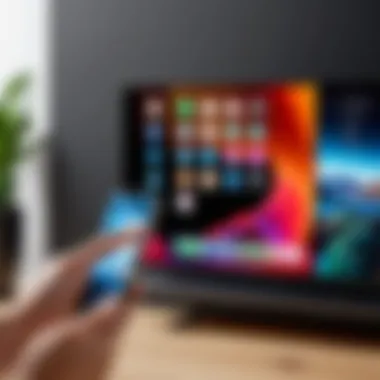
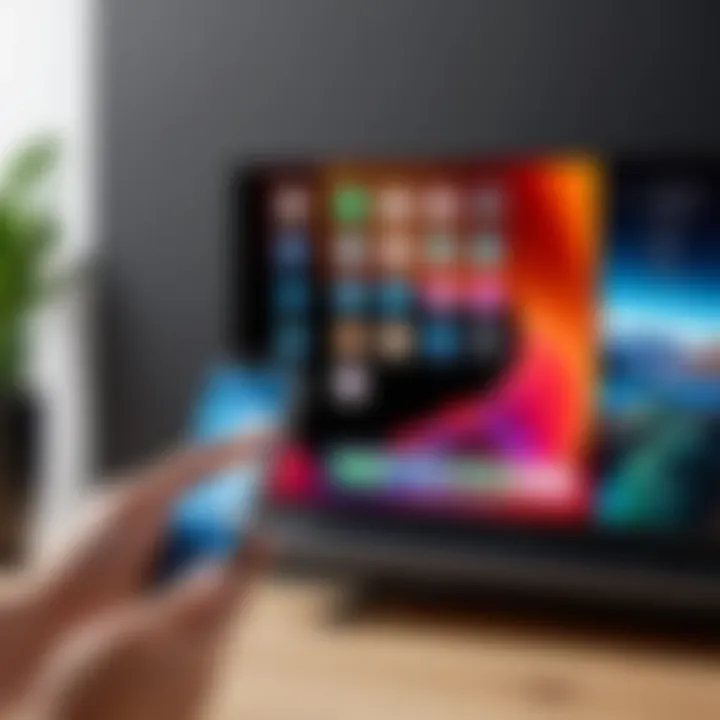
To cast your iPhone using a wired connection, follow these steps:
- Step 1: Plug the Apple Lightning Digital AV Adapter into your iPhone's charging port.
- Step 2: Connect one end of your HDMI cable to the adapter and the other end to an available HDMI port on your television.
- Step 3: Switch your TV input to the appropriate HDMI channel where the cable is connected.
- Step 4: Your iPhone display should now be mirrored on the TV. You can begin streaming content or viewing apps directly.
Using wired methods can also enhance the longevity of your devices. Wireless casting can wear out batteries faster due to constant use of Wi-Fi. By using a wired connection, your iPhone can remain charged while casting. This is practical for longer viewing sessions without the worry of battery drain.
This direct connection method is ideal for activities requiring constant streaming, such as gaming or watching movies where every frame matters.
Overall, wired connections deliver reliable performance, making them a preferred choice for many tech-savvy users. They provide a straightforward way to enjoy media on a larger screen with minimal fuss.
Troubleshooting Common Issues
Screen casting can be a convenient method to share content from your iPhone to a TV. However, issues can arise during the casting process. Understanding how to address these problems is essential for a smooth experience. This section highlights common challenges faced by users and offers solutions to effectively manage these issues.
Connection Problems
Connection problems can be frustrating when attempting to cast your iPhone to a TV. These problems often stem from network issues or compatibility mismatches between devices. To begin with, ensure that both your iPhone and TV are connected to the same Wi-Fi network. If they are on separate networks, casting will not occur.
Here are steps to address connection problems:
- Check Wi-Fi Connection: Verify that your Wi-Fi is active and both devices are connected to the same network. A quick reboot of the router may help if the connection seems unstable.
- Restart Devices: Simple restarts of your iPhone and TV can sometimes resolve connectivity issues. This action resets their network connections.
- Update Software: Ensure that both devices are running the latest software versions. Compatibility issues can arise from outdated software.
Utilizing features such as Airplane Mode temporarily and then switching it off can also help reset connections, allowing devices to find each other.
Screen Mirroring Failures
Screen mirroring failures can occur even after the connection is established, leading to disappointing viewing experiences. Common reasons for these failures may include interference, hardware limitations, or improper settings on your iPhone.
Here are a few ways to troubleshoot screen mirroring failures:
- Determine Device Compatibility: Not all TVs support screen mirroring. Check that your TV is AirPlay-compatible or supports the specific casting method you are using.
- Check for Interference: Physical barriers or interference from other devices on the Wi-Fi network can disrupt the signal. Try to minimize obstacles between your iPhone and the TV during the casting process.
- Verify Mirroring Settings: Ensure that the screen mirroring option is enabled on your iPhone. You can access this by swiping down from the upper right corner to open the Control Center, then selecting "Screen Mirroring."
Important Note: If mirroring still fails after following the above steps, consider resetting the network settings on your iPhone. This extreme measure could resolve underlying connectivity issues that persist.
By recognizing common issues and effectively troubleshooting them, users can enhance their casting experience and enjoy a more seamless connection between their iPhone and TV.
Optimization Tips for Better Performance
When casting your iPhone to a television, ensuring optimal performance can significantly enhance the experience. This section discusses critical elements to consider, helping to minimize latency, improve visuals, and maintain a steady connection. The goal is to provide tech-savvy individuals with actionable tips that can elevate their screen casting capabilities.
Improving Wi-Fi Signal Strength
A strong Wi-Fi signal is crucial for consistent screen casting. Weak signals can lead to buffering and poor image quality. Here are a few strategies to improve your Wi-Fi signal:
- Position Your Router Strategically: Place your Wi-Fi router in a central location within your home to maximize coverage.
- Reduce Obstacles: Minimize the number of walls or electronic devices between your router and the television. Interference can be disruptive to signal strength.
- Upgrade Your Router: If your router is outdated, consider upgrading to a dual-band or mesh network router for improved performance.
- Use Ethernet for Stability: For devices that allow it, connecting your television directly to your router via Ethernet can provide a more stable connection than relying solely on Wi-Fi.
Adjusting Device Settings
Changing specific settings on your iPhone and TV can enhance the casting experience. Here are several adjustments to consider:
- Enable Airplane Mode: When casting, activate Airplane mode and then enable Wi-Fi. This helps prevent interruptions from calls or notifications while casting.
- Close Background Apps: Limit background applications running on your iPhone. This can free up processing power and resources, ensuring a smoother casting experience.
- Update Software: Regularly check for software updates on both your iPhone and television. Updates may contain performance improvements and bug fixes that can enhance casting functionality.
- Adjust Video Resolution Settings: Some apps allow you to adjust the resolution settings for casting. Lowering the resolution may reduce buffering and improve performance, especially on slower networks.
By implementing these optimization tips, users can create an environment that supports better casting performance, allowing for a more pleasant viewing experience.
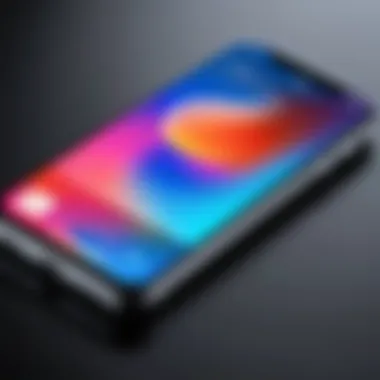
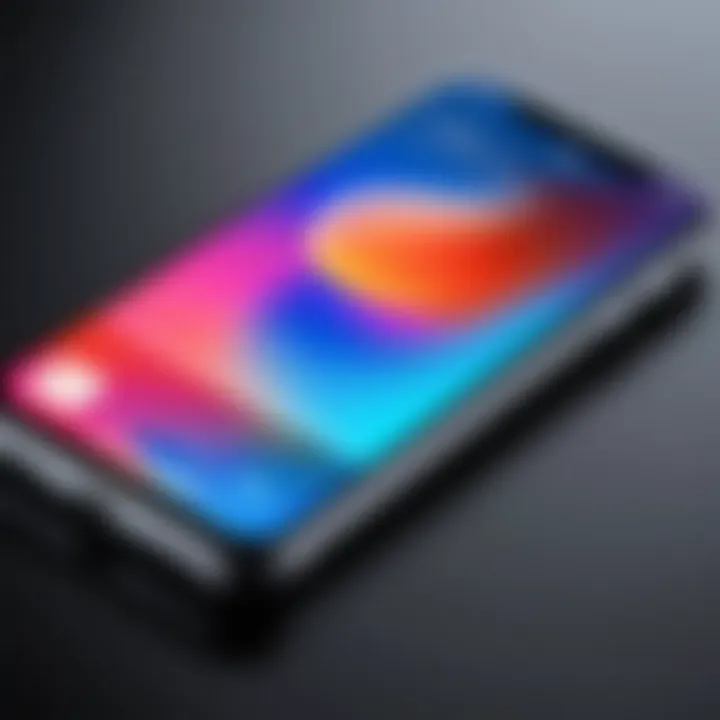
Limitations of Casting
While the ability to cast your iPhone to a television offers a myriad of advantages, it is critical to understand the limitations that come with this technology. These limitations can affect user experience significantly. The focus on these constraints helps users set realistic expectations and prepare adequately for various situations they might encounter.
Resolution Constraints
One of the primary limitations of casting from your iPhone to a TV is related to resolution. When casting, the output resolution can be influenced by several factors, including the capabilities of both the iPhone and the receiving device. Most notably, not all televisions support the same resolution formats.
For example, an iPhone 12 has the ability to stream content in 4K. However, if you are connecting to an older TV model that supports only 1080p, you will not be able to take full advantage of the iPhone's capabilities. This results in downscaling of the video quality, leading to a less impressive viewing experience.
Moreover, even when using higher-end televisions, the source material must also be compatible with the desired resolution. Streaming apps and services may have limitations on how they encode content. As such, even with a capable setup, you might find that some streamed content is not available in high definition.
"Resolution limitations vary considerably and can greatly diminish the quality of your viewing experience."
To mitigate this, always check the resolution specifications of both devices before attempting to cast. Users should be particularly cautious when accessing content from different sources to ensure the best possible quality.
Latency Issues
Another significant limitation of casting involves latency. This refers to the time delay between the command you execute on your iPhone and its corresponding action on the TV. Latency can be quite disruptive, particularly when engaging in activities that demand real-time interaction, such as gaming or video conferencing.
Several factors contribute to latency. One major reason is the Wi-Fi network's bandwidth. A congested network can lead to delays, making the casting experience frustrating. Additionally, the strength of the Wi-Fi signal can have a direct impact, especially if the devices are far apart or there are physical obstructions.
It is important to note that certain applications have higher latency than others. Video streaming is generally less impacted than gaming apps. For gamers, even minor delays can diminish gameplay responsiveness, affecting performance and enjoyment.
Future of Screen Casting Technologies
The evolution of screen casting technologies plays a crucial role in how users engage with digital content. As more devices become interconnected, understanding the future landscape of these technologies can equip users with deeper insights into their potential. This section explores the anticipated advancements and highlights their significance in enhancing user experience.
Emerging Trends in Screen Mirroring
Screen mirroring has witnessed a noteworthy transformation over the years. Recent developments signal a shift towards more intuitive systems. Notable trends include:
- Integration with Smart Home Systems: The convergence of screen mirroring with smart home devices is gaining traction. This will allow users to control their entire entertainment system via a single interface.
- Enhanced Multi-Screen Experiences: As more devices support multi-screen functionality, users will increasingly enjoy seamless transitions between their mobile devices and televisions.
- AI and Adaptive Streaming: The utilization of artificial intelligence in screen casting applications will improve user interface experiences by customizing content recommendations based on viewing habits. Additionally, adaptive streaming technologies will optimize video quality based on the user's network conditions.
These trends indicate a future where casting is not only about displaying content but also about enriching user interaction across platforms.
Impact of 5G on Streaming and Casting
5G technology is set to revolutionize various aspects of digital communication. Its implementation will have profound implications for screen casting functionalities. Key impacts include:
- Increased Speed: The ultra-reliable low-latency communication (URLLC) that 5G offers will dramatically reduce buffering times. Users can enjoy nearly instantaneous casting without interruptions.
- Higher Quality Content: Improved bandwidth enables the streaming of ultra-high-definition (UHD) content. Users will access sharper visuals and clearer audio.
- Enhanced Connectivity: With 5G, multiple devices can connect simultaneously without congestion. This allows for group casting scenarios where friends and family can share content on one screen with minimal delays.
As 5G technology spreads, it will reshape the screen casting experience and create more extensive ecosystems for digital interaction.
"5G represents a paradigm shift that will eliminate existing barriers in screen mirroring, pushing the technology towards a new horizon of possibilities."
The future of screen casting brings promising advancements, particularly with 5G being at the forefront. Staying updated on these developments offers users an advantage in leveraging their devices effectively.
End
The conclusion of this article is vital as it encapsulates the journey we have taken to explore how to cast your iPhone onto a television. Understanding casting technologies not only enhances the viewing experience but also integrates these advanced tools into everyday life. This section should provide clarity on the essential elements discussed throughout the article.
Summary of Key Points
- Screen Casting Overview: We began by defining screen casting and its significance in today’s digital age. The methods to cast vary but include both wireless and wired options.
- Device Compatibility: Ensuring your devices are compatible is key to a successful casting experience. This involves checking both the iPhone and the television or casting device.
- Network Requirements: A stable and fast network is critical. It is advisable to consider factors that can affect Wi-Fi performance, such as distance from the router.
- Utilizing AirPlay: Apple's AirPlay provides a seamless way to mirror screens and stream content. This built-in feature is a popular choice among iPhone users.
- Third-Party Applications: There are numerous applications available that can aid in screen mirroring. Installation and potential troubleshooting steps were addressed.
- Wired Options: In case of connectivity issues, wired solutions should not be overlooked. Adapters and cables like HDMI can provide a more stable connection.
- Troubleshooting: Common issues like connection problems and screen mirroring failures were explored. This empowers users with solutions to potential obstacles.
- Future Trends: The article did point towards new trends and technological advancements that shape the future of casting.
Final Thoughts on Casting Technologies
As we wrap up, it is essential to recognize that casting is more than a mere convenience; it represents a leap towards greater connectivity and integration of devices. The continual advancements in technology, particularly with the advent of 5G, promise a future where casting will become more efficient and accessible. Users must remain informed about their devices and network settings to harness the full potential of these technologies. By understanding how to optimize casting experiences, users can enhance their entertainment environments with minimal hassle. This knowledge not only empowers individuals but also helps in making informed choices regarding technology investments for better and more interactive viewing experiences.
"With the rapid evolution of casting technologies, the challenge remains in adapting and keeping pace with changes, ensuring a smooth and enjoyable media consumption experience."







